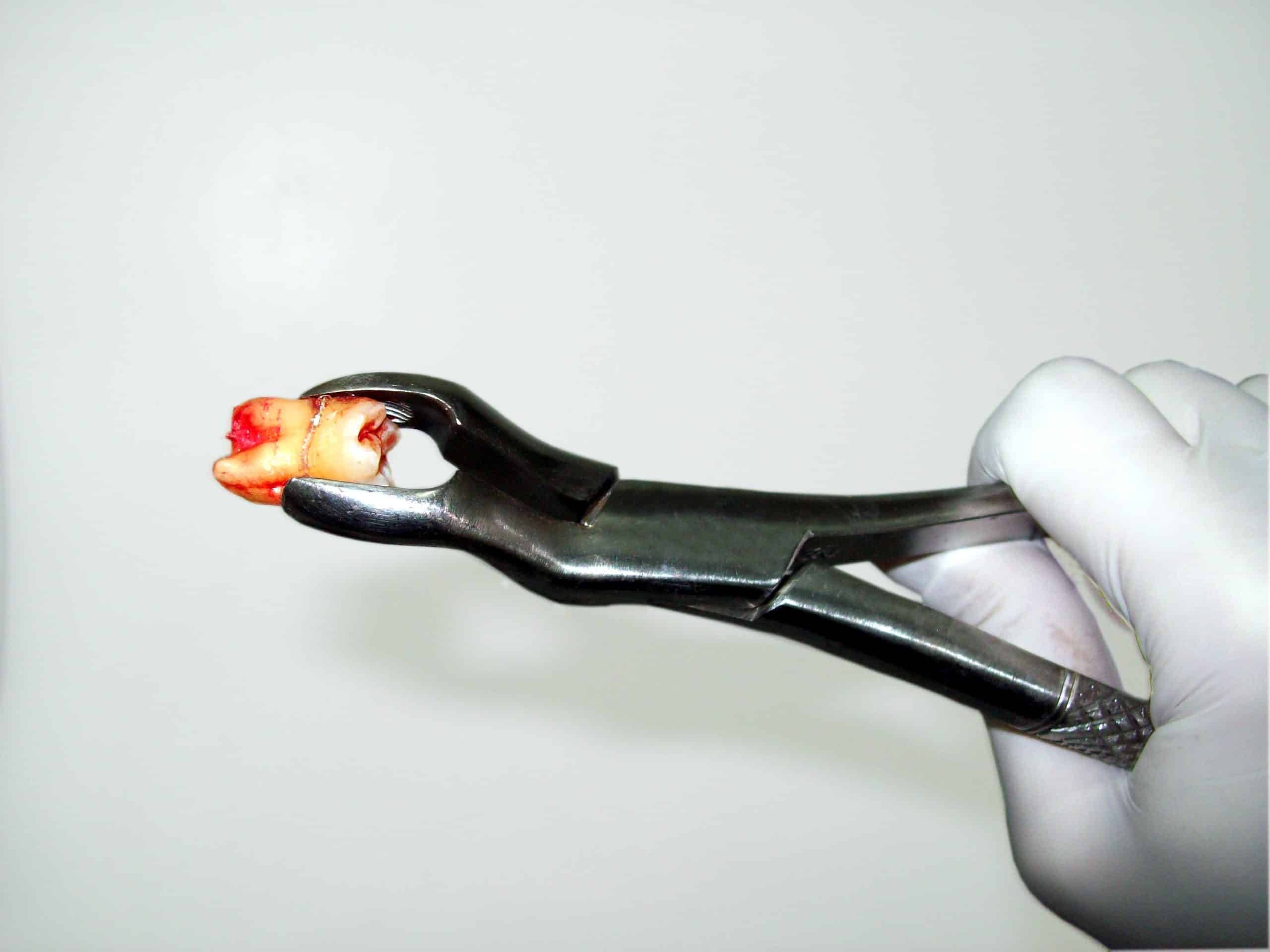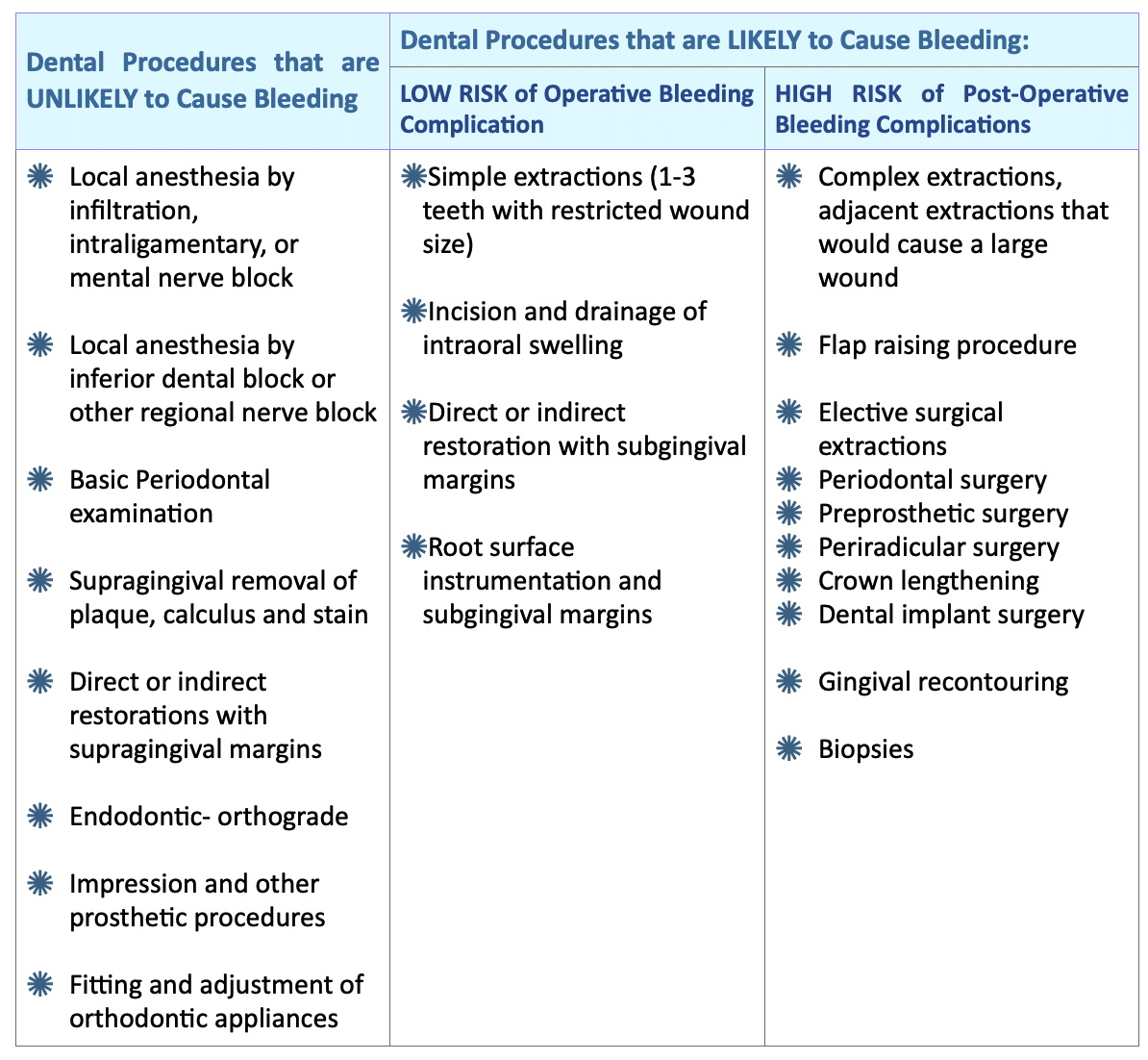WHAT IS THE IMPORTANCE OF KNOWING AND UNDERSTANDING ANTICOAGULANTS IN OUR DENTAL PRACTICE?
In our last post we discussed the definition of anticoagulants drugs. We also took into consideration different patients with medical conditions who requires intake of those type of drugs including laboratory examinations you may need to request from their doctors. See Part 1: CLICK HERE
On this post, we will discuss about the risk of bleeding in dental procedures and how you may manage this kind of situation.
In any type of procedure bleeding isn’t always a good sign. Bleeding in Dentistry means you either hit a soft tissue or you’ve caused bone bleeding. Soft tissue bleeding can be due to traumatic extraction, leading to laceration of blood vessels (arterial, venous or capillary). Bone or osseous bleeding can be from either the canals or from the central vessels.
Whether you are preparing a crown or doing a minor surgery, bleeding is one of the frequently encountered complications in dental practice. Complications can range from soft tissue hematomas to severe blood loss that maybe expected when they aren’t handled properly. As most patients are affected high blood, diabetes, old age and other systemic diseases, this post, hopefully, will inform all of us what’s the safest approach in management of our patient.
DENTAL PROCEDURES WITH HIGHEST BLEEDING RISK
We categorize the bleeding risk of a dental procedure based on its invasiveness. This table below is intended to be our guide for bleeding risk assessment of our patient’s dental treatment. However, we still need to take into consideration further judgement on an individual case basis. In the attempt of performing a dental procedure, as a dentist, we should be sufficiently confident and skilled in the procedure and management of the associated peri-operative bleeding. If in doubt don’t shy away to seek advice or refer to a more experienced colleague for either the primary or secondary care.
Let’s take these medicines as examples: Warfarin, Acenocoumarol and Phenindione block the effects of vitamin K, which is needed to make some clotting factors earlier described. Blocking vitamin K prevents blood clots to easily form by increasing the time it takes to make fibrin. It usually takes two or three days for these medicines to fully work.
We manage patients who are taking an anticoagulant drug and require dental treatment unlikely to cause bleeding on this manner:
- Treat the patient following standard procedures avoiding any cause of bleeding.
For a patient who is taking an anticoagulant drug and requires dental treatment that is likely to cause bleeding, with a low or higher risk of bleeding complication on this manner:
- If the patient has another relevant medical condition or is taking other medications that may increase bleeding risk, ask the patient for a clearance of their physician.
- If the patient is on a treatment with anti-coagulation medication, delay non-urgent, invasive procedures until the medication has been discontinued.
- Plan treatment for early in the day and week, where possible, to allow time for the management of prolonged bleeding or re-bleeding episodes should they occur.
- Perform the procedure as atraumatically as possible, use appropriate local measures and only discharge the patient once hemostasis has been achieved.
- Advise the patient to take paracetamol, unless contraindicated for pain relief rather than NSAIDs such as Aspirin, Ibuprofen, Diclofenac or Naproxen..
CONCLUSION
In conclusion, by identifying which dental procedures that are unlikely to bleed, low risk and high bleeding risk , this minimizes our chances of endangering our patients. We need to understand that each patients have different health conditions, different parameters and different needs. Thus, there are cases that medical clearance is needed as this acts as a go signal to us to perform the necessary procedure needed while the health of the patient is deemed to be in complicated condition. It is also ideal that there will be situations that both you and the cardiologist of your patient must co-manage together the treatment implementation. Always remember, if unsure, try to delay if possible and thoroughly plan your dental procedure. Moreover, keep in mind that when surgical procedures are more extensive, you must be aware of all your available options and keep in close contact with the patient to provide rapid follow-up and emergency treatment if a complication does occur.
Contributor:
Dr. Bryan Anduiza – Writer
Dr. Jean Galindez – Editor
REFERENCES:
1. Little JW, Falace DA, Miller CS, Rhodus NL, editors. Dental Management of the Medically Compromised Patient. 8 th ed.; 2012.
2. Morgan GE Jr, Mikhail MS, Murray MJ, editors: Clinical Anaesthesiology. 5 th ed. Lange; 2013.
3. Allman KG, Wilson IH, editors. Oxford Handbook of Anaesthesia. 3 rd ed. Oxford: Oxford University Press; 2010.
4. Gupta A, Epstein JB, Cabay RJ. Bleeding disorders of importance in dental care and related patient management. J Can Dent Assoc 2007;73:77-83.
5. In: Duke J, editor. Anesthesia Secrets. 4 th ed. Elsevier; 2010.
[dvk_social_sharing] [et_bloom_inline optin_id="optin_1"]














